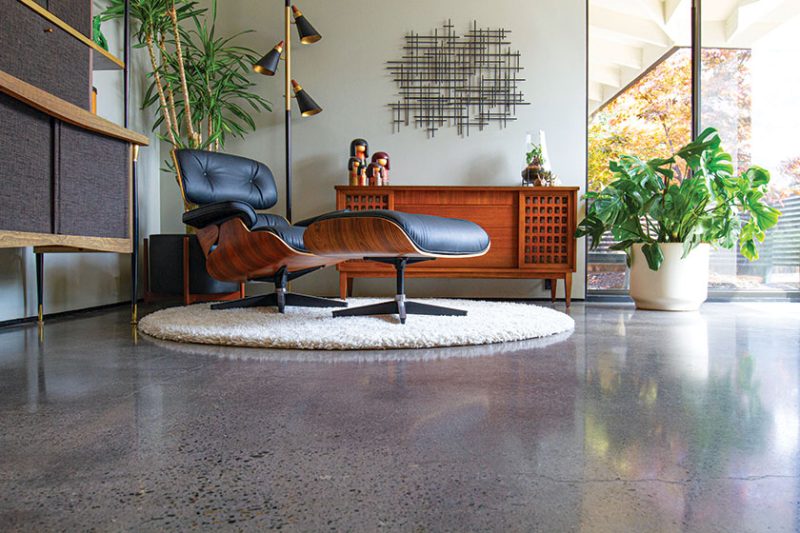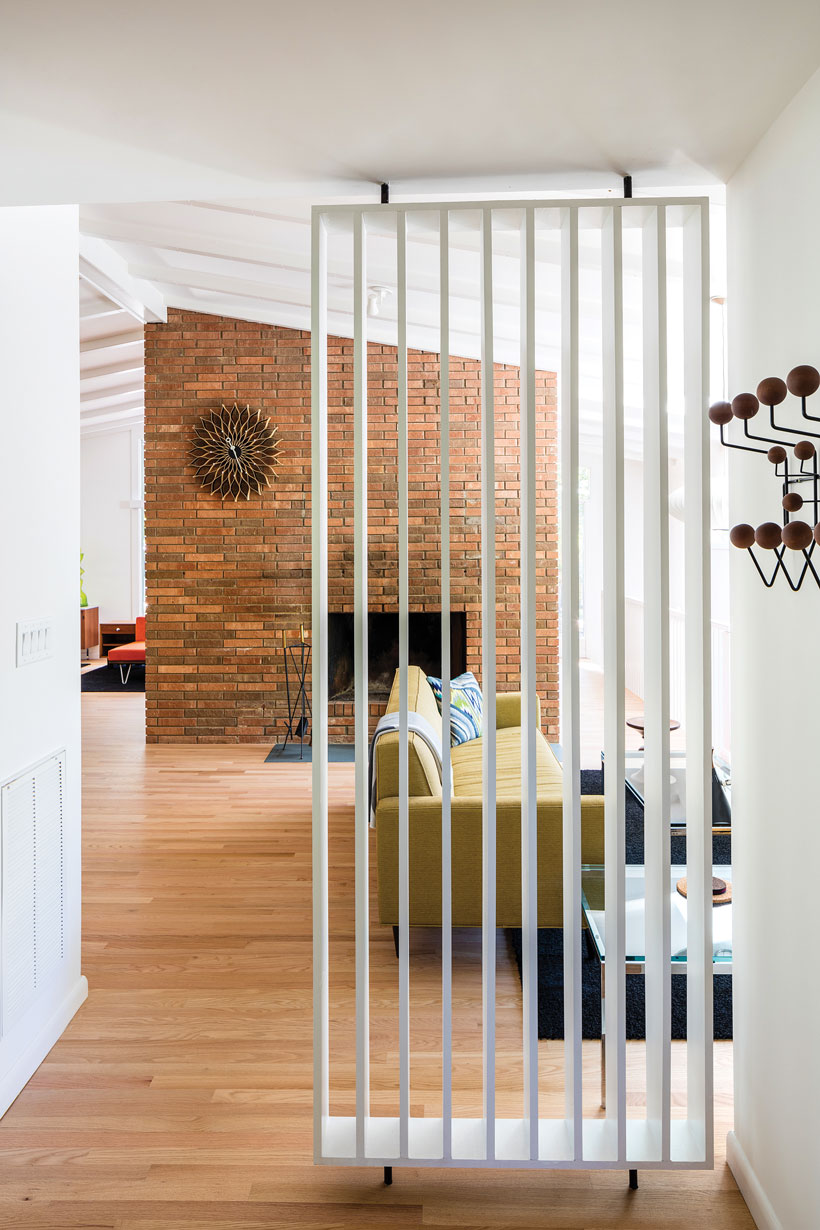Are you considering finished concrete floors? Are you ready for a renovation but don’t know where to begin?
It’s not uncommon to feel overwhelmed by a remodel—particularly when decisions affect the whole house. As a rule, we generally guide our clients to begin with flooring. After all, every renovation should start with a “solid foundation.”

Let’s take a closer look at finished concrete. Forget what you’ve heard about this surface being cold and uninviting. Concrete’s ease of cleaning, durability and unique character make it a particularly desirable surface for mid-century homes.
No matter what material you’re considering for your floors, the decision might be enough to make your head spin. Here’s to putting your best foot forward for a renovation on “solid ground”!
What Lies Beneath
When it comes to refinishing concrete, the details matter. Level of polish (sheen) and desired color both significantly impact the total cost because of the additional work involved.
From the beginning, I knew I wanted to go the more expensive route (of course): darker concrete floors with a satin sheen throughout. So, to maintain the budget, I managed the demo and removal of existing flooring myself.
My home had a patchwork of different flooring throughout—laminate wood, carpeting, tile and multiple layers of linoleum—including the original from 1974.

First, the laminate had to come up and then the underlayment. While these came out in good-sized chunks, I had to wear a mask, because there was a ton of dust and pet hair that had accumulated from previous owners. As I worked, knowing that hidden dust, dirt and critters would never again be a problem, I felt even better about my decision. Luckily, the carpeting and foam also came up easily.

The most difficult material to remove was the linoleum. I had an industrial razor-scraper, but I did have to call in additional help to remove some ultra-stubborn areas.
Overall, demo was a painstaking effort, but it was well worth it to be able to include what I really wanted into my budget.
Professional Grade
After completing the material removal, my flooring contractor, Prep Concrete, assessed the slab and found it to be in remarkable condition. Only a few small areas needed to be reinforced and skimmed with a fresh layer of concrete.

This had me concerned; but, after the stain was applied, the patched areas became subtle, only adding to the unique character of the flooring and story of the home.


The grinding process involves using giant circular sanders with diamond bits that give a smooth, level surface. Hand-sanders are used to reach into tight spaces, such as corners and closets. From there, various pads progressively polish to a finer degree with each pass, determining the final sheen of the floor. Because I wanted a finish that was somewhere between shiny and matte, three complete passes were made throughout the house.

If you’re thinking of pursuing concrete floors for your own home, be aware that the grinding process creates more dust than the Great Plains in the 1930s! Ideally, flooring is done before moving in whenever possible. However, if you’re already living in the home, it’s best to plan to vacate while the work is performed.


A pleasant surprise resulting from the grinding process was that it exposed the aggregate gravel that was used within the original concrete mix; it created a beautiful, natural, salt-and-pepper terrazzo effect throughout the finished concrete floor. After grinding, the floors were stained and sealed. I worked closely with my contractor to create a custom-blended stain and sealer, which further emphasized the natural characteristics and richness of the slab.
Wabi, Meet Sabi
A Japanese-inspired spirit is carried throughout my home in the form of furnishings, art and finishes, via which “wabi-sabi,” a Japanese concept that embraces the perfectly imperfect, is found throughout. It’s the celebration of wisdom in natural simplicity—the well-earned patina of a worn-in leather jacket or the beauty of unknown outcomes of fired ceramic glazes.


In finished concrete, it’s the variegated colors, hairline cracks and uneven patterns that tell a meaningful story. Mid Century Modern aesthetics can sometimes lean toward a cold or clinical feel, but introducing a nonuniform, organic surface can make the space feel more inviting and grounded in the guiding principles of indoor/outdoor living. The industrial, imperfect look of concrete juxtaposed with the refined modern architecture and furnishings provides a wonderful contrast that truly captures the hand-in-glove relationship of Japanese influence and MCM design and lifestyle.
Find more renovation inspiration, projects and recipes at midcenturymaurer.com.

For more flooring ideas, see Flooring 101: Materials galore for a just right retro floor. And of course, don’t forget to follow us on Instagram, Facebook and Pinterest for more Atomic Ranch articles and ideas!












